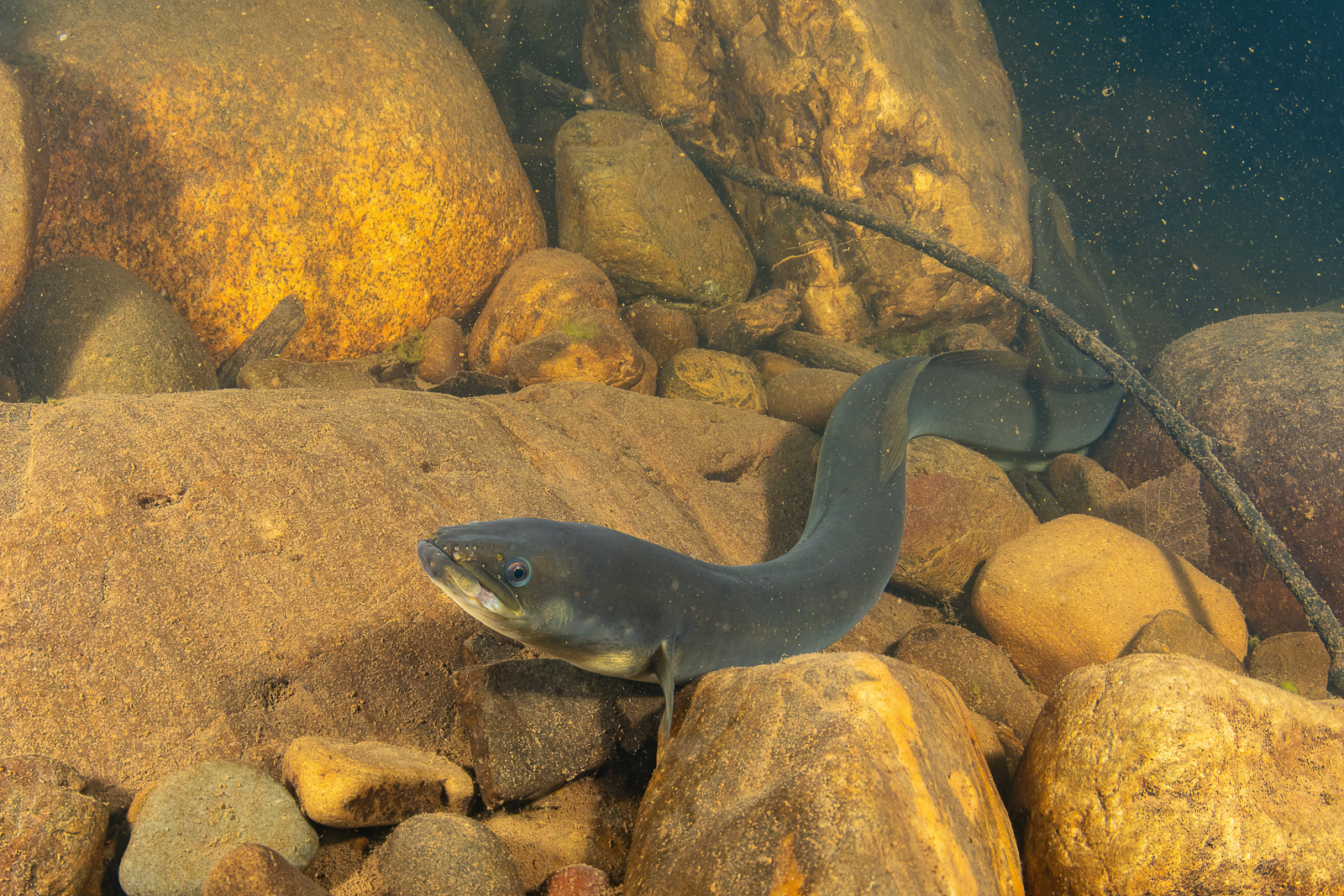
SIZE :40 cm for males and up to one meter for females.
LIFE EXPECTANCY : From 15 to 20 years, up to 43 years.
LIFE CYCLE : American eels are born in the Sargasso Sea, southwest of Bermuda. They migrate through freshwater to the Great Lakes. When they reach maturity, eels return to the salt waters of their birthplace to reproduce.
Before spawning, eels take on a silvery color. The fry are transparent, then they turn yellow. Their color changes with age. The eel will become male or female depending on environmental conditions, particularly water density. American eels die after spawning.
In salt or brackish water, eels grow faster than in freshwater.
The American eel has an elongated, snake-like body with a very long dorsal fin. Its skin has small, encrusted scales and is covered with a layer of mucus. It has several rows of teeth, and its lower jaw protrudes past the upper. Its color varies from olive green to brown, with a paler belly.
Near the bottom, between 0 m and 464 m deep, in fresh or brackish water.
Eels prefer muddy, algal, and rocky bottoms.
Its habitat will vary over the course of its life. The American eel lives in freshwater and migrates to saltwater to reproduce. It is a catadromous fish.

Credit : Richard Larocque, photo taken in the Rivière Rimouski, at a depth of 5 metres.
PREY :
Seaweeds
Molluscs
Crustaceans
PREDATORS :
Gulls
River otters
Herons
MACHINES :
First Nations of the Gaspé and Lower St. Lawrence regions have been fishing eels for centuries. At first, the fishing was done at dusk or at night, using torches. Over time, fishing gear has changed: nigogs (harpoons), traps, fish spears, and weirs.
Although this type of fishing is becoming increasingly obsolete, it was once an essential source of food for these Native peoples, and still retains its cultural importance today. In fact, since 2023, the skills and practices associated with fixed gear fishing in the St. Lawrence, such as weir fishing, have been part of Quebec’s intangible cultural heritage. This recognition confirms the fundamental place of fishing in the province’s history, from the early use of fixed gear by Aboriginal peoples to the present day.
REGULATIONS :
- Fishing season
- Number of permits
- Quotas
- Minimum size of 20 cm
The biomass of the American eel is in decline. This is due to habitat degradation, over-fishing, and changes in ocean conditions. The construction of dams also complicates eel migration and spawning.
BENEFITS : Its flesh is rich in nitrogen and potassium and is very fatty. 100 g of raw flesh contains 16 g of protein, 18 g of fat, and 233 calories.
Eel oil, skin, and eggs were used by First Nations for their medicinal benefits.
LET’S COOK : Delicate and fatty taste. Soft texture.
Eel is used in a variety of dishes, such as stews and sushi. It can also be eaten smoked, filleted, jellied, or canned.
OUR CULINARY ADVICE :
- It’s best to leave the skin on when baking or grilling eels.
- It goes surprisingly well with pork, but also with ginger, currants, or lemon.
- Given its threatened status, we do not recommend eating American eel.





